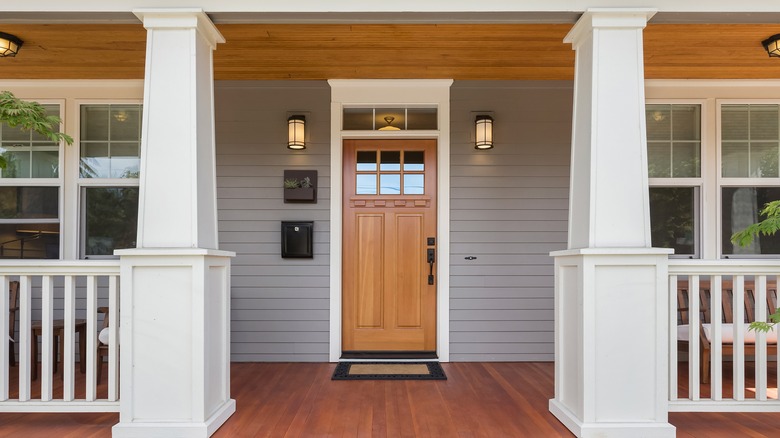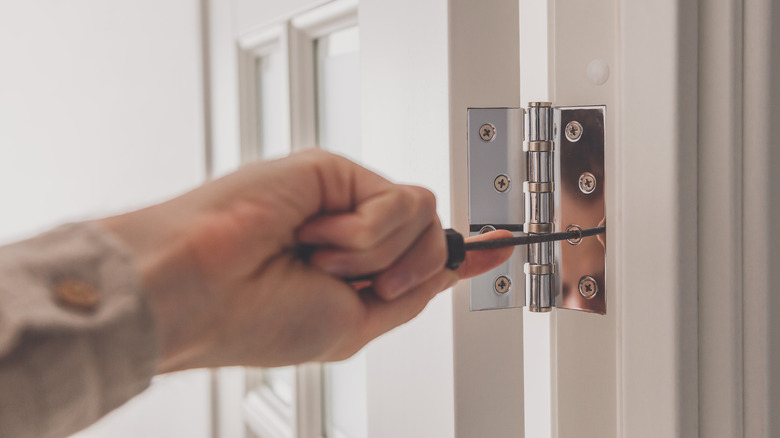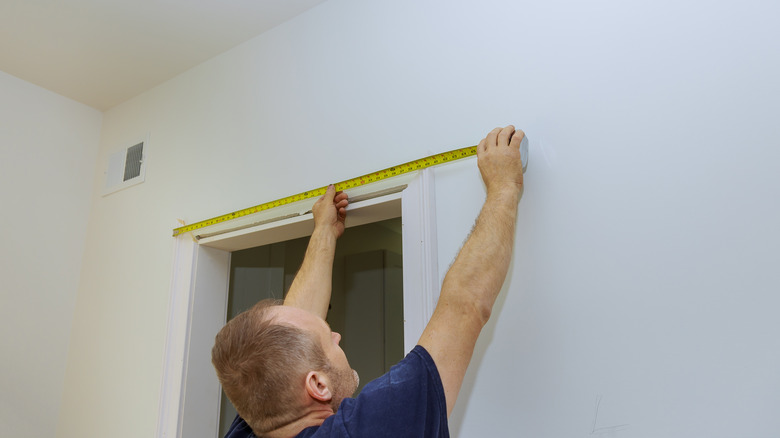How To Fix An Annoying Sticky Door
Without doubt, doors have been sticking ever since they were devised in ancient Egypt as a portal to the afterworld (via The Archaeologist). A door may not open and close freely for a variety of reasons, including weather conditions, improper installation, hardware issues, or problems with the frame. The force of gravity or shifts in the foundation may also be to blame. Per Above Board Building Inspections, changes in the flooring might possibly be the culprit. Typical wear and tear may also be responsible for a recalcitrant door. One that is simply not level may just need a minor adjustment.
In most cases, a door that resists opening and closing can be fixed without much ado, and without professional intervention. Before undertaking anything more drastic, first assess the cause of the problem. Is it humidity that is making the door swell? Do the hinges or screws need attention, or is the stickiness caused by the door itself? Next, determine if you are capable of solving the problem, keeping in mind that a superficial do-it-yourself fix may not be a fix at all. It may actually worsen the situation.
Least extreme fixes
Southwest Exteriors says humidity is a door's major foe, and it's the most common reason a door's movement is impeded. Mugginess, especially after rain, can cause a door to swell and eventually warp, making it stick as a result. Using a dehumidifier and blasting the air conditioner lowers the humidity indoors. Taking cooler showers and relocating indoor plants outside can also help to make your door work better. Drier conditions will allow it to self-repair as the swelling subsides, per The Oklahoman.
Lubricating the hinges is a non-intrusive way to improve a sticking door. WD40, olive oil, and silicone spray are effective lubricants. Manhattan Door Corporation recommends bathing the entire hinge, making sure not to ignore the pins, screw tops, and slot tops. Wipe away any excess lubricants after treating the hardware. It's possible that buildup of dirt and grime is the cause of slow door movement. Wiping clean the door edges and the sides of the doorframe can help.
An out-of-alignment door may stick, and loose hinges, screws, or latches may confirm the problem. A loose screw needs to be tightened or replaced if the hole or screw are stripped. According to the Los Angeles Times, a longer screw might be helpful, and the holes can be fortified using toothpicks covered in wood glue for a temporary fix.
Trim the door if necessary
If all else fails, one may be faced with trimming the door if it's continuing to rub against the frame or flooring. Identify where the door is sticking and use a pencil or chalk to indicate the spot, per Popular Mechanics. For best results, this step requires removing the door. Doors & More suggests placing it horizontally over a pair of sawhorses in order to do the repair work. The problem areas can be planed or sanded before rehanging the door.
If the door is coming into contact with the frame, you can cautiously apply a paint scraper to that spot. A downward pull will shave the wood or the paint that is making the door stick. Repeat as needed. The scraped area can be sanded smooth afterward. A door may stick at its base if there is protruding paint or varnish rubbing on the floor. Putting sandpaper on the surface and opening and closing the door repeatedly over it may whittle the impediment down. A too-thick rug may hinder the door's operation as well.
Keep in mind that over-zealous attempts to remedy a sticking door can be detrimental. Proper clearance is only a fraction of an inch, so there is little room for error. A door that is trimmed too much moves more freely but rattles and is susceptible to drafts in the winter, which will likely be just as annoying as one that barely moves.


